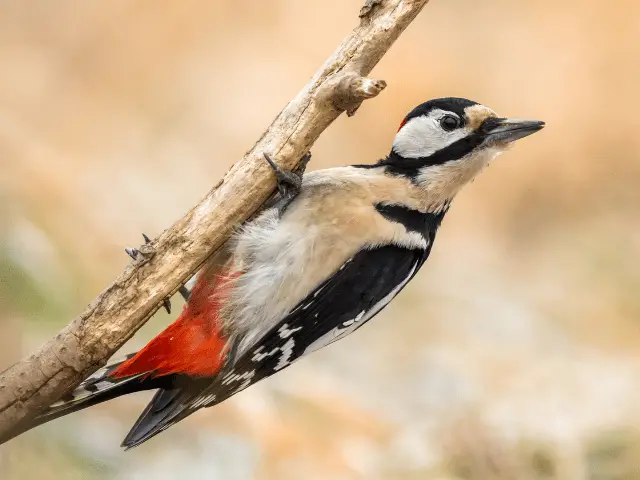Searching for Missouri woodpeckers is a fulfilling adventure.
Actually…
There are seven types to spot, a birding tour that'll take you deep into woodlands and forests beside swamps.
You'll need a pair of boots to wade through the foliage, looking for signs like holes in trees. You'll also look out for sap wells, so carry a pair of binoculars.
But, if you're not planning to go birding anytime soon, I'll tell you the MO woodpeckers that may visit your bird feeder.
Types Of Woodpeckers In Missouri: 7 Species To Spot
1. Downy Woodpecker
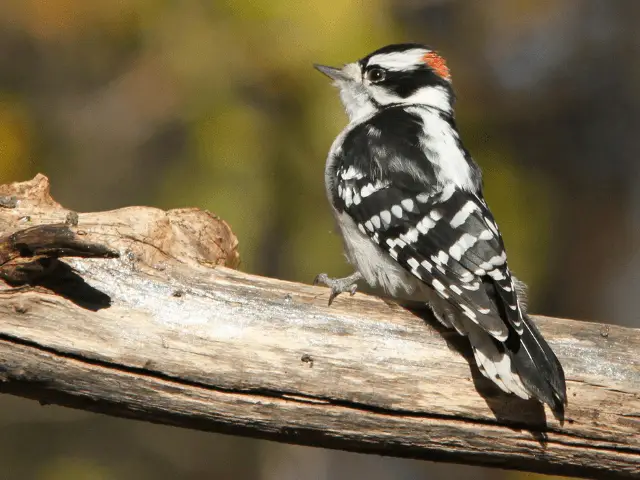
We can comfortably say it's the smallest woodpecker you'll see in this state as it's 6 to 7 inches long. It's also light, weighing about 1 ounce. Luckily, you can spot it all year round, making sure you listen for its high-pitched calls in woodlands and forests.
One of its favorite hideouts is the deciduous type of trees.
In winter, it joins other species for safety and to increase its chance of getting some food. The downy woodpecker has black and white plumage, a small bill, and a whitish underbelly.
Nonetheless, the juvenile males may spot some reddish-brown color on the mane.
2. Red-Bellied Woodpecker

It's not even a red belly; it's more of a pale red one. You'll spot this woodpecker in the woodlands any day of the year.
In addition to insects, it also loves nuts, fruits, plus seeds. It's over 9 inches long with a wingspan of about 16 inches.
3. Red-Headed Woodpecker
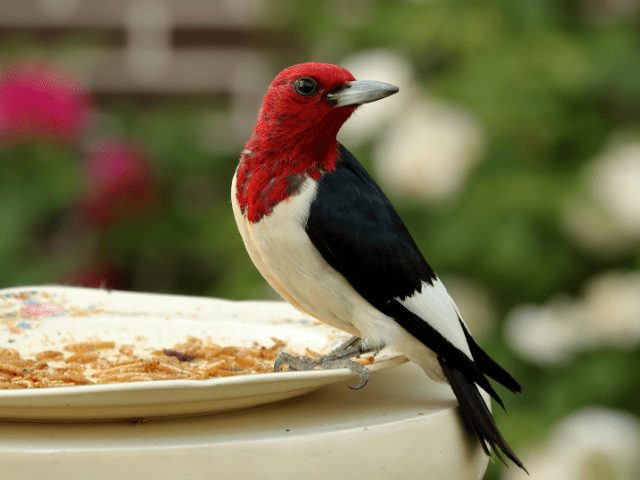
Unlike the red-bellied woodpecker with a pale red color on its belly, the red-headed is a true red-headed bird. You can't miss it in swamps and pine savannah.
Unfortunately, it doesn't visit bird feeders.
4. Yellow-Bellied Sapsucker

It's a migratory bird that flies to the northern section of the state during the breeding season. The yellow-bellied sapsucker inhabits deciduous trees.
Look at its belly and chest to tell it apart from other woodpeckers of Missouri. You'll know it's a yellow-bellied sapsucker if it has a black and yellow chest, a white belly, and a black and red throat.
5. Northern Flicker
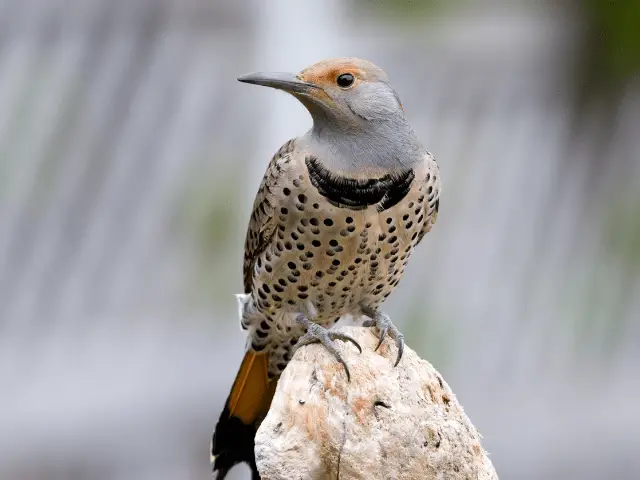
It's a beauty! It stands out because it's larger than other woodpeckers in Missouri, and its plumage is different. Others have red, white, or black-colored heads, but this bird has a silvery brown one plus a barred underside.
However, it also perches on trees in open woodlands. You'll see it all year round in MO. The northern flicker is heavy and large, with a wingspan of up to 20 inches.
6. Pileated Woodpecker

Like the northern flicker above, this one has a striking appearance, characterized by black, white, red, and yellow colors. Black dominates the wings and the underbelly. The most stunning element of its appearance is its red mohawk.
What's more, it's a large bird; you can't miss it. It's the largest in the state weighing about 11 ounces and 16 to 19 inches in length.
You ought to look for it in mature forests with dead trees and foliage in the southern region of MO. You'll know a pileated woodpecker lives there when you see rectangular holes on dead trees.
The pileated woodpecker mates from March to May, and it incubates its eggs for about 18 days.
7. Hairy Woodpecker
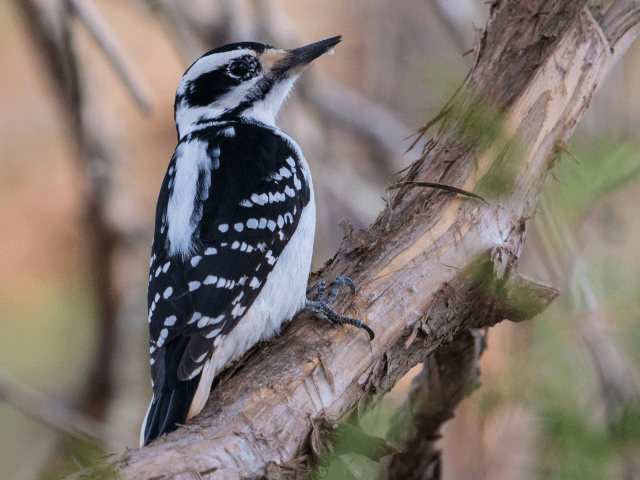
You don’t have to plan a birding expedition to spot a hairy woodpecker.
It's one of the woodpeckers of Missouri that love suet and sunflower seeds.
Unique Habits & Characteristics Of Woodpeckers In Missouri
Yes, they peck trees in a unique style, and that's how you'll know there are woodpeckers nearby. They drum to mark territory, find food, or when mating.
That's one of the best energy and time management tactics I've ever heard! 🙂
Their bills are long and sharp, so they can curve excellent holes to reach insects, and they use their tongues to capture them.
The yellow-bellied sapsuckers prefer a more sophisticated meal, so they trap insects together with tree sap. Woodpeckers can withstand long hours of drilling and drumming thanks to their sturdy tail and feet. Their strong necks provide the strength to drill fast and vigorously.
But how do they know they're making progress when drumming? Well, the feathers around their nostrils brush the wood chips off.
If you want to get to know more of these amazing woodpeckers in Missouri and how to attract them, watch this:
FAQs About Missouri Woodpeckers
What Kind Of Woodpeckers Are In Missouri?
There are seven species in MO, which we have discussed above. Most of them inhabit the state all year round, except the yellow-bellied sapsucker.
Black, white, red, and yellow are the dominant colors of these birds, so the best way to tell them apart when you go birding is by carrying pictures of woodpeckers in Missouri.
Is It Illegal To Shoot A Woodpecker In Missouri?
Yes, the law classifies them as migratory, non-game birds protected by state and federal laws. These birds damage property when they invade in dozens, but you don’t have the right to shoot them down. Instead, remove the bird feeder, clear dead trees, cover cavities in walls, and drain water baths.
Final Thoughts
Missouri has many birding destinations where you can spot woodpeckers, such as Eagle Bluffs Conservation Area, August A. Busch Memorial Conservation Area, and Mingo National Wildlife Refuge.
It's okay if they show up in your backyard uninvited because you'll enjoy birding without tiresome walks in parks. Plus, it’s easier to observe and ID them in your backyard.
But, woodpeckers drill trees, so any dead tree in your backyard becomes a home. They may also chase away smaller birds and inhabit their nest boxes. Therefore, plan your next expedition.

